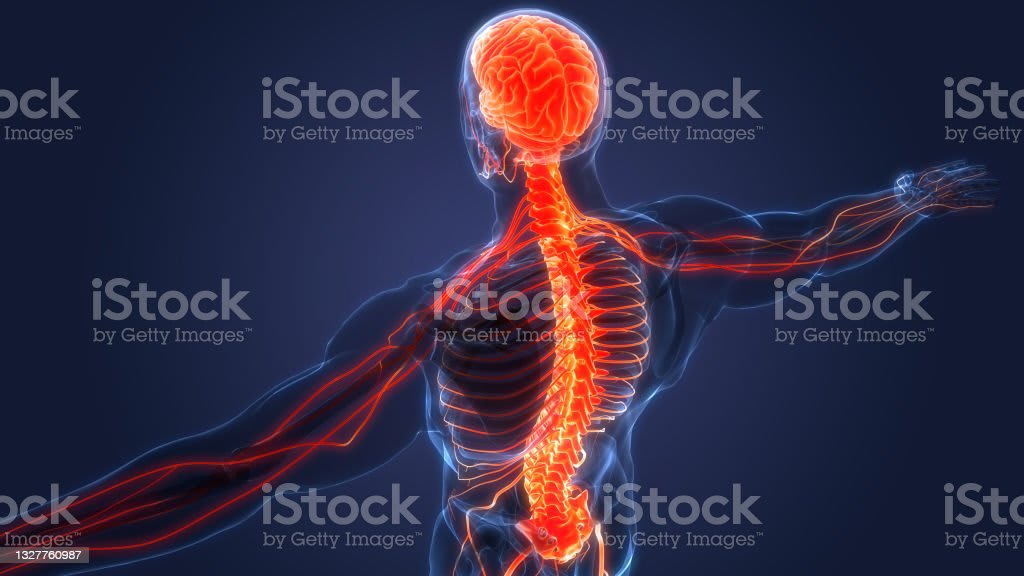
This morning unfolded in the usual manner for me. I awoke with thoughts lingering about the recurring dream involving the guy in the sloth costume. Afterward, I got dressed as the chill in the air demanded it. Following that, I prepared some toast with butter due to my hunger, and I attended to my dog's needs, as she was whining and gazing at me. Next, I brewed some tea, allowing it to cool off before consumption to prevent a repeat of the mouth burn from yesterday.
These routine activities, aside from being part of my morning ritual, exemplify the functions carried out by my nervous system. The peculiar dream, the sensation of temperature changes, the decision-making regarding toast toppings, and responding to the dog's behavior—these actions were all governed by electrical and chemical signals within nerve cells. The significance of the nervous system cannot be overstated, as it regulates a myriad of functions, encompassing organs, physiological responses, psychological reactions, and even overseeing the endocrine system.
The nervous system's influence is all-encompassing, impacting everything in our existence. It serves as the bedrock of our identity and is integral to every living being, from humans to animals and beyond. This importance is the reason we are dedicating a series of upcoming episodes to delve into the fundamental aspects of the nervous system: its structure, organization, communication mechanisms, and the consequences when it sustains damage. In essence, the nervous system functions as the ultimate command center, overseeing the orchestration of our lives.
While many animals possess a nervous system, with the exception of the simplest organisms like sponges, ours stands out as one of the most distinctive features of our species. From composing literary works to engaging in debates about time travel or even juggling knives, the full spectrum of our thoughts, actions, and emotions can be distilled into three fundamental functions: sensory input, integration, and motor output.
Consider, for instance, the scenario of a spider crawling onto your bare knee. The sensory receptors in your skin detect the sensation of its eight legs—a prime example of sensory input. This information undergoes processing within your nervous system, where decisions are made about the appropriate response. This phase is known as integration; it involves determining whether to react calmly or to exhibit a more heightened response.
Should you decide to swiftly remove the spider, accompanied by an expressive scream, your motor output is engaged—the body's reaction triggered by your nervous system activating specific bodily components. This intricate coordination necessitates a highly integrated system that continually processes and manages information. This topic will be the focus of our discussions in the upcoming episodes.
When discussing the nervous system, it is important to understand its various levels of organization. The system can be categorized into two primary parts: the central nervous system and the peripheral nervous system. The former comprises the brain and spinal cord, serving as the core control center. It's responsible for making decisions, such as commanding the removal of the spider and directing your hand's actions. The latter consists of nerves branching from the brain and spine, facilitating communication between the central nervous system and the rest of the body.
These systems interact in a bidirectional manner. The sensory, or afferent, division transmits sensory information to the brain, alerting it to the spider's presence. The motor, or efferent, division conveys instructions from the brain to muscles and glands, enabling the body to respond. The motor division can further be divided into the somatic (voluntary) nervous system, governing skeletal muscle movement, and the autonomic (involuntary) nervous system, overseeing processes like heartbeats, breathing, and digestion.
The autonomic nervous system contains two complementary divisions: sympathetic and parasympathetic. The sympathetic division activates the body and triggers heightened responses, as seen in situations like encountering a spider. In contrast, the parasympathetic division induces relaxation, allowing the body to return to a more balanced state.
With regard to nervous tissue, neurons take the spotlight, although glial cells also play a significant role. Neurons are responsible for responding to stimuli and transmitting signals. While they receive much attention, they constitute only a fraction of nervous tissue; glial cells, known as neuroglia, are equally important. Astrocytes, microglial cells, ependymal cells, and oligodendrocytes collectively form the neuroglia and are responsible for functions ranging from support and insulation to immune defense.
Neurons, though widely varied in structure, share key characteristics. The cell body, or soma, functions as the neuron's life support center, housing essential components such as the nucleus, DNA, mitochondria, ribosomes, and cytoplasm. Dendrites extend from the soma, resembling bushy branches that receive messages from other cells. On the other hand, the axon serves as the communication pathway, transmitting electrical impulses away from the cell body. The structure of neurons varies, aiding in their classification.
Three neuron types are defined by the number of processes extending from the cell body. Multipolar neurons possess multiple processes, including an axon and numerous dendrites. Bipolar neurons feature two processes—one axon and one dendrite—emerging from opposite sides of the cell body. Unipolar neurons possess a single process extending from the cell body. These distinctions help classify neurons based on both their structure and function.
Now, applying this knowledge, let's revisit the scenario of a spider crawling on your knee. The unipolar sensory neurons in your skin detect the crawling sensation, transmitting this signal along an axon wrapped in Schwann cells to your spinal cord. There, the signal is relayed to various interneurons. Some interneurons trigger a rapid response, activating the quadriceps muscle and causing your leg to kick reflexively. Others transmit the signal to your brain, where recognition of the spider occurs, and the appropriate response is determined.
Understanding the intricate chemistry and electricity-based communication between nerve cells is a profound and complex aspect of the nervous system's functioning. This topic will be explored in depth in our upcoming lesson. To summarize today's lesson, you've acquired insight into how the nervous system manages sensory input, integration, and motor output, governing various aspects of our lives. We've explored the organization and roles of the central and peripheral nervous systems, as well as the diverse functions of different glial cell types within nervous tissue. Additionally, we've delved into the structure and function of neuron types, both anatomically and functionally, using the example of encountering a spider on your skin.
About the Creator
Enjoyed the story? Support the Creator.
Subscribe for free to receive all their stories in your feed. You could also pledge your support or give them a one-off tip, letting them know you appreciate their work.





Comments
There are no comments for this story
Be the first to respond and start the conversation.